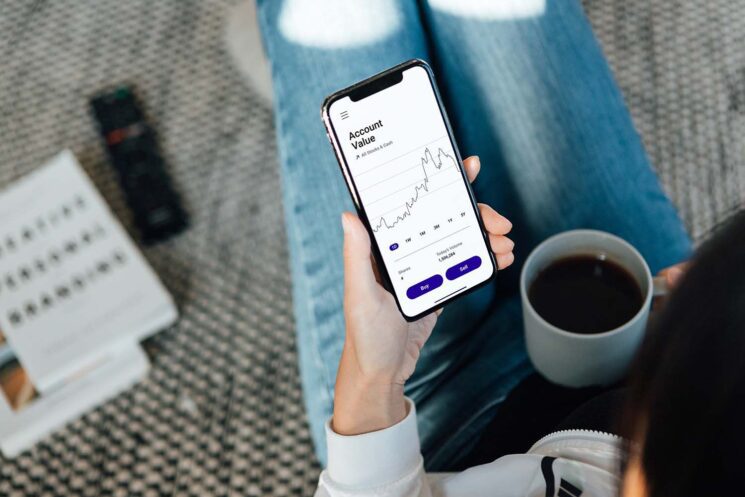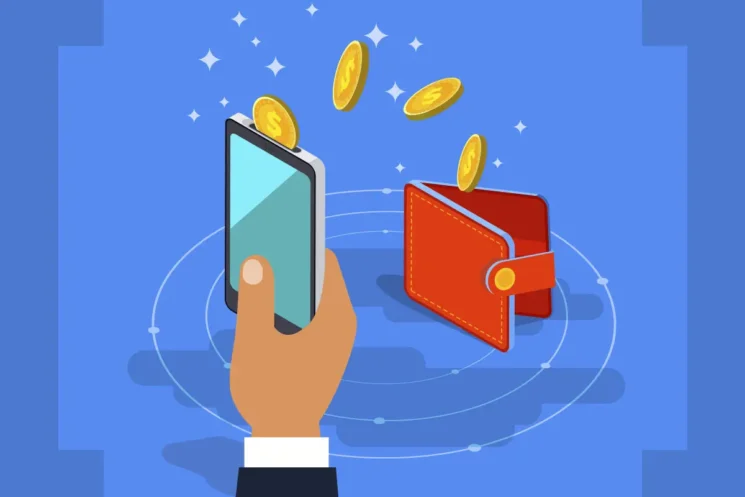In today’s digital age, cryptocurrencies have gained significant popularity as an alternative investment option. With the rise of Bitcoin and other digital currencies, many people are curious about how to buy crypto and get started in this exciting and potentially lucrative market. In this comprehensive guide, we will walk you through the process of buying cryptocurrencies, covering everything from choosing a reliable exchange to securing your digital assets. So, if you’re ready to dive into the world of crypto, let’s get started!
Cryptocurrencies have become a hot topic in recent years, with Bitcoin’s meteoric rise capturing the attention of investors worldwide. If you’re interested in joining this exciting market, it’s essential to understand the basics of buying cryptocurrencies. In this article, we will guide you through the step-by-step process, ensuring you have the knowledge and confidence to navigate the crypto landscape successfully.
In This Post
1. Understanding Cryptocurrencies

What are Cryptocurrencies?
Cryptocurrencies are digital or virtual currencies that use cryptography for security. Unlike traditional fiat currencies issued by governments, cryptocurrencies operate on decentralized networks called blockchains. These digital assets offer secure, peer-to-peer transactions and are not controlled by any central authority, such as a bank or government.
How do Cryptocurrencies Work?
Cryptocurrencies work through a technology called blockchain, which is a decentralized and transparent ledger. Each transaction is recorded in a block and linked together to form a chain. This technology ensures the integrity and security of cryptocurrency transactions. Miners verify and validate these transactions, adding them to the blockchain and earning rewards in the form of newly created coins.
Types of Cryptocurrencies
There are thousands of cryptocurrencies available today, each with its unique features and purposes. Bitcoin, the first and most well-known cryptocurrency, paved the way for others to enter the market. Some popular cryptocurrencies include Ethereum, Ripple, Litecoin, and Bitcoin Cash. It’s important to research and understand the characteristics of different cryptocurrencies before investing.
2. Choosing a Crypto Exchange

To buy cryptocurrencies, you’ll need to find a reliable crypto change. Here are some key factors to consider when choosing an exchange:
Researching Different Exchanges
Take the time to research and compare different cryptocurrency exchanges. Look for exchanges that have a solid reputation, good user reviews, and a wide range of available cryptocurrencies. Consider factors like exchange fees, supported countries, and trading volume.
Security Measures
Security is of utmost importance in the crypto world. Look for exchanges that implement robust security measures, such as two-factor authentication (2FA), cold storage for funds, and encryption protocols. Ensure the exchange has a strong track record of protecting user funds.
User Interface and Trading Features
A user-friendly interface and intuitive trading features can make your crypto buying experience smoother. Choose an exchange that offers a seamless and responsive platform, making it easy to execute trades and monitor your investments.
3. Setting Up Your Account

Once you’ve chosen a suitable exchange, it’s time to create an account and get started. Here’s what you need to do:
Creating an Account
Visit the exchange’s website and sign up by providing the necessary information, such as your name, email address, and password. Some exchanges may require additional identity verification to comply with regulatory standards.
Completing the Verification Process
To increase your account’s security and access higher trading limits, you may need to complete a verification process. This process usually involves providing identification documents and proof of address.
Setting Up Two-Factor Authentication
Enable two-factor authentication (2FA) to add an extra layer of security to your account. 2FA typically involves linking your account to a mobile app like Google Authenticator or receiving verification codes via SMS.
4. Funding Your Account

Before you can buy cryptocurrencies, you need to fund your exchange account. Here’s how:
Selecting a Payment Method
Exchanges offer various payment methods, including bank transfers, credit/debit cards, and even cryptocurrency deposits. Choose the payment method that suits your preferences and offers reasonable fees and processing times.
Depositing Funds into Your Account
Follow the instructions provided by the exchange to deposit funds into your account. Ensure you enter the correct information and double-check the recipient wallet address if you’re depositing cryptocurrencies.
Fiat Currency vs. Crypto Deposits
If you’re using fiat currency (government-issued currency), you’ll need to deposit it into your account before buying cryptocurrencies. Some exchanges also allow direct deposits of cryptocurrencies.
5. Selecting Your Cryptocurrencies

With your exchange account funded, it’s time to select the cryptocurrencies you wish to purchase. Consider the following factors:
Researching Different Cryptocurrencies
Thoroughly research the cryptocurrencies you’re interested in. Understand their use cases, development teams, market trends, and potential risks. Make informed decisions based on reliable sources of information.
Evaluating Market Cap, Liquidity, and Volume
Market capitalization, liquidity, and trading volume are important indicators of a cryptocurrency’s stability and popularity. Look for cryptocurrencies with substantial market cap and trading volume, as they tend to be more liquid and less volatile.
Diversifying Your Portfolio
Diversification is key to managing risk in your crypto investments. Consider diversifying your portfolio by selecting cryptocurrencies from different categories, such as established coins like Bitcoin, promising platforms like Ethereum, and potentially high-growth altcoins.
6. Making Your First Crypto Purchase

Now that you’ve done your research and selected your cryptocurrencies, it’s time to make your first purchase. Follow these steps:
Placing a Market Order
A market order allows you to buy cryptocurrencies at the current market price. Enter the amount you want to spend or the quantity of the cryptocurrency you wish to buy, and execute the order. Be aware of the applicable fees for market orders.
Placing a Limit Order
A limit order allows you to set a specific price at which you want to buy a cryptocurrency. If the market reaches your desired price, the order will be executed. This method gives you more control over the purchase price but may take longer to fulfill.
Reviewing and Confirming Your Order
Before finalizing your purchase, carefully review the details of your order, including the cryptocurrency, quantity, and total cost. Confirm that everything is accurate before proceeding.
7. Securing Your Crypto Assets

After buying cryptocurrencies, it’s crucial to secure your digital assets. Here’s what you can do:
Setting Up a Digital Wallet
Consider transferring your purchased cryptocurrencies to a digital wallet for enhanced security. Wallets come in various forms, such as software wallets (desktop or mobile), hardware wallets (physical devices), or even paper wallets (offline storage).
Using Hardware Wallets for Added Security
Hardware wallets offer an extra layer of protection by storing your private keys offline. These devices are designed to safeguard your cryptocurrencies from potential hacking attempts and online threats.
Enabling Two-Factor Authentication for Wallets
If your chosen wallet supports it, enable two-factor authentication (2FA) for an added layer of security. This ensures that even if someone gains access to your wallet’s password, they still need the second factor (e.g., a verification code) to log in.
8. Staying Informed and Monitoring Your Investments

To make informed decisions and stay on top of the crypto market, follow these steps:
Tracking Price Movements
Keep track of price movements and market trends for your chosen cryptocurrencies. Use reliable cryptocurrency tracking platforms or exchanges to monitor real-time prices, historical data, and technical indicators.
Following Crypto News and Trends
Stay updated with the latest news, developments, and regulatory changes in the crypto industry. This knowledge will help you make informed decisions and understand the factors that can impact the value of your investments.
Using Portfolio Tracking Tools
Consider using portfolio tracking tools that provide comprehensive overviews of your crypto holdings. These tools help you monitor the performance of your investments, track profits and losses, and analyze portfolio diversification.
9. Selling and Withdrawing Your Crypto

If you decide to sell your cryptocurrencies or withdraw funds, follow these guidelines:
Understanding Selling Strategies
Before selling, determine your investment goals and create a selling strategy. You can choose to sell a portion of your holdings, sell when specific price targets are reached, or adopt a long-term “hodl” (hold) strategy.
Withdrawing Funds from Your Exchange
If you want to convert your cryptocurrencies back to fiat currency, follow your exchange’s withdrawal process. Ensure you’re familiar with the withdrawal fees and processing times associated with your chosen withdrawal method.
Tax Considerations
Be aware of the tax regulations in your jurisdiction regarding cryptocurrencies. Consult with a tax professional to understand your obligations and ensure compliance with relevant tax laws.
10. Staying Safe in the Crypto Market

As the crypto market continues to grow, it’s essential to stay vigilant and protect yourself from scams and potential threats. Consider the following safety measures:
Recognizing Scams and Phishing Attempts
Be cautious of phishing attempts and fraudulent schemes. Never share your private keys, passwords, or sensitive information with anyone. Verify the authenticity of websites and communication channels before providing any personal details.
Protecting Your Private Keys
Your private keys are the access keys to your crypto assets. Keep them secure by storing them offline or in a hardware wallet. Avoid sharing your private keys with anyone and be cautious of malware or keylogging threats.
Being Cautious with Public Wi-Fi Networks
When accessing your crypto accounts or making transactions, avoid using public Wi-Fi networks, as they may expose your sensitive information to potential hackers. Use secure and trusted networks when dealing with your crypto assets.
Conclusion
Buying cryptocurrencies can be an exciting and potentially rewarding venture. By following the steps outlined in this guide, you can confidently enter the crypto market and begin your investment journey. Remember to conduct thorough research, choose a reliable exchange, secure your assets, and stay informed about market trends. With proper knowledge and caution, you can navigate the world of crypto and unlock its potential.
FAQs (Frequently Asked Questions)

Q: Can I buy cryptocurrencies with a credit card?
A: Yes, many exchanges offer the option to purchase cryptocurrencies using a credit card. However, be aware of the associated fees and consider the credit card’s interest rates.
Q: How do I know which cryptocurrencies to invest in?
A: It’s important to conduct thorough research, analyze market trends, and consider your investment goals. Seek advice from reliable sources and consider diversifying your portfolio.
Q: What is the best way to secure my cryptocurrencies?
A: Using a hardware wallet is generally considered one of the safest options for storing cryptocurrencies. It keeps your private keys offline and away from potential online threats.
Q: Are there any risks associated with buying cryptocurrencies?
A: Yes, investing in cryptocurrencies comes with risks, including price volatility, regulatory changes, and security threats. It’s important to be aware of these risks and invest only what you can afford to lose.
Q: Are cryptocurrencies subject to taxation?
A: Tax regulations regarding cryptocurrencies vary by jurisdiction. It’s crucial to understand the tax laws in your country and consult with a tax professional to ensure compliance.
By following this comprehensive guide, you’ll be well-equipped to buy cryptocurrencies and embark on your journey in the exciting world of digital assets. Remember to stay informed, make informed decisions, and prioritize the security of your investments. Happy investing!